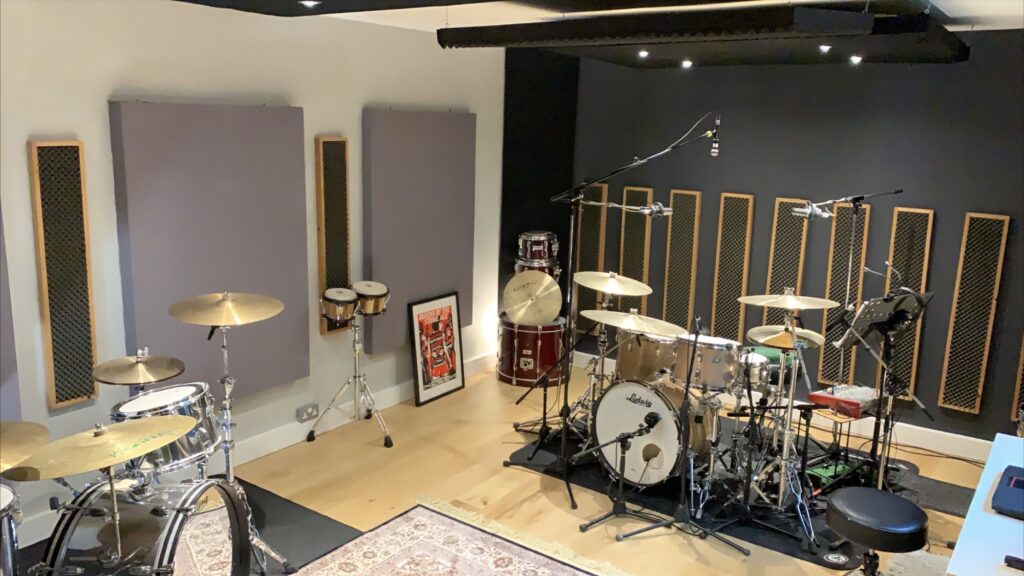Soundproof paint, also known as acoustic paint or sound deadening paint, has gained attention as a potential solution for noise reduction in homes, offices, and other spaces. Promising to dampen sound and provide a quieter environment, it’s often marketed as an easy and cost-effective alternative to traditional soundproofing methods such as insulation or acoustic panels. But does soundproof paint actually live up to these claims? Let’s delve into the science behind it and evaluate its effectiveness.
How Does Soundproof Paint Work?

Soundproof paint typically contains special additives that claim to absorb sound waves, reducing their ability to travel through walls or other surfaces. These additives may include materials like ceramic microspheres, latex, or other compounds designed to enhance sound absorption.
When applied to a surface, soundproof paint forms a layer that is intended to block or dampen sound waves, thereby reducing the transmission of noise through walls, ceilings, or floors. The idea is that the sound waves will penetrate the paint layer and be converted into heat energy or dissipated, resulting in a quieter environment on the other side.
Evaluating the Effectiveness
While soundproof paint may offer some level of noise reduction, its effectiveness can vary depending on several factors:
Thickness of the Coating:
The thickness of the paint layer can impact its ability to absorb sound. Thicker coatings generally provide better soundproofing properties, but excessively thick layers may not be practical or aesthetically pleasing.
Surface Type:
Soundproof paint is typically applied to walls, ceilings, or other solid surfaces. Its effectiveness may be influenced by the material and condition of the surface it’s applied to. Smooth, non-porous surfaces may yield better results compared to rough or porous surfaces.
Frequency of the Noise:
Soundproof paint may be more effective at attenuating certain frequencies of sound than others. It may be particularly effective at reducing high-frequency noise but less effective at blocking low-frequency sounds like bass.
Environment and Surroundings:
The effectiveness of soundproof paint can also be influenced by the surrounding environment. Factors such as ambient noise levels, building construction, and structural features can impact its performance.
Contact Waseem Technical Soundproofing Expert in Dubai: +971 50 209 7517
Conclusion
While soundproof paint may offer some benefits in reducing noise levels, it’s important to manage expectations and understand its limitations. For significant noise reduction, especially in environments with high levels of noise pollution, combining soundproof paint with other soundproofing techniques is recommended. Additionally, consulting with a professional soundproofing specialist can help determine the most effective solutions for your specific needs.
FAQs
Is soundproof paint a complete solution for soundproofing a room?
Soundproof paint can contribute to noise reduction, but it’s rarely sufficient as a standalone solution. It’s best used in combination with other soundproofing methods such as insulation, acoustic panels, or sealing gaps and cracks in walls.
How do I apply soundproof paint?
Soundproof paint is typically applied like regular paint, using a brush, roller, or sprayer. Follow the manufacturer’s instructions regarding preparation of the surface, application techniques, and drying times.
Can soundproof paint eliminate all types of noise?
While soundproof paint can help reduce noise, it may not completely eliminate all types of noise, especially low-frequency sounds like traffic or machinery vibrations. Its effectiveness depends on various factors including the thickness of the coating and the frequency of the noise.
Is soundproof paint environmentally friendly?
Some soundproof paints may contain volatile organic compounds (VOCs) or other chemicals that can impact indoor air quality. Look for low-VOC or eco-friendly options if environmental concerns are important to you.




